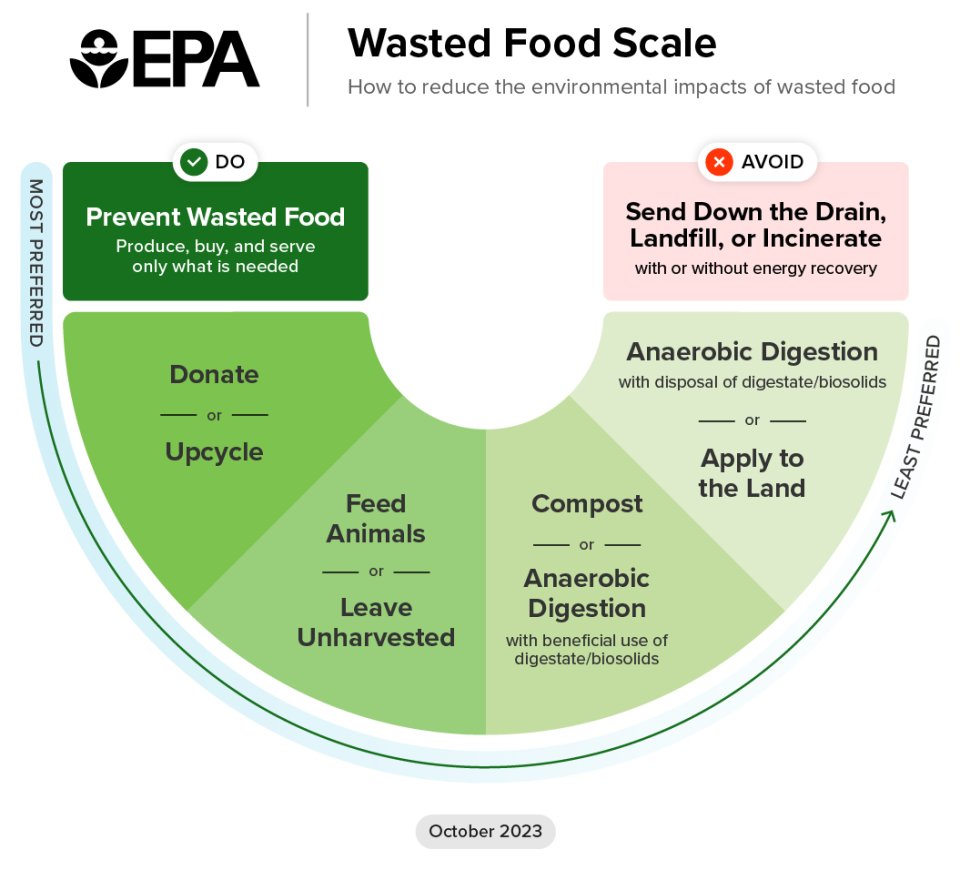Ramsey County services are not impacted by the Federal shutdown at this time.
Thought for food: Understanding food recovery

We all produce food waste, but not all of our food waste looks the same. For instance, putting an orange peel in the trash is different than uneaten food and leftovers ending up in the trash. In both examples food is wasted, but each one offers different opportunities for saving food from going to waste.
Orange peels, as well as eggshells, bones and other fruit and vegetable peels, are examples of food waste – or food products or scraps that aren’t usually eaten. Food scraps like these can be composted to create nutrient-rich compost for gardens.
Unserved food and leftovers are examples of wasted food, or food that could have been eaten but wasn’t. Other examples include leftovers that went bad, groceries that no one bought or produce that wasn’t picked at a farm. If recovered, this food could have been used in a variety of ways to extend the lifetime and value.
Food waste and wasted food happen in our own kitchens and at a larger scale at restaurants, grocery stores, schools and other businesses. About 30% of all food produced in the United States never gets eaten. Much of this food ends up in landfills or incinerators, where it produces greenhouse gas emissions and wastes the resources that went into producing the food.
At the same time that large amounts of food go to waste, people in our community experience hunger. Food security means having reliable and consistent access to food that is culturally appropriate and meets dietary and medical needs. In Ramsey County, an estimated 1 in 10 adults and 1 in 5 children are food insecure and do not have reliable access to food. Food insecurity disproportionately affects residents who are Black, American Indian and other people of color, as well as people with limited income and/or mobility. Root causes to this issue include systemic racism and other long-standing issues, which have been worsened by the COVID-19 pandemic.
Wasted food impacts both our environment and communities. While there are many options for reducing wasted food, the most preferred way to save food is to produce enough food to feed everyone without creating excess. One way to practice this at home is to buy what you will eat and avoid buying items that you will not be able to eat in time.
The next best option is to feed hungry people. Globally, we produce enough food to feed everyone in the world, yet there are systemic barriers that impact who can access food and who struggles. Food relief agencies accept food donations from households and businesses who have excess food. This can help bridge the gap between food waste and hunger by saving edible food from going to the trash and feeding our communities.
After feeding people, excess food can be used to feed animals on farms. After that, food can be used for industrial use, like creating biogas from anaerobic digestion. Next after industrial uses, food can be composted. Both of these options recover some value from food and can be particularly useful for food scraps and parts of food that aren’t generally eaten (think back to the orange peel example).
Putting food in the trash should be a last resort. No value can be recovered from food at that point, and it wastes the resources that went into producing the food.
In future articles, this series will continue exploring food waste reduction and share how Ramsey County and its partners help recover food, as well as what actions we can all take to reduce food going to waste.
Learn more about food security initiatives in Ramsey County.
Source: Wasted Food Scale, Environmental Protection Agency